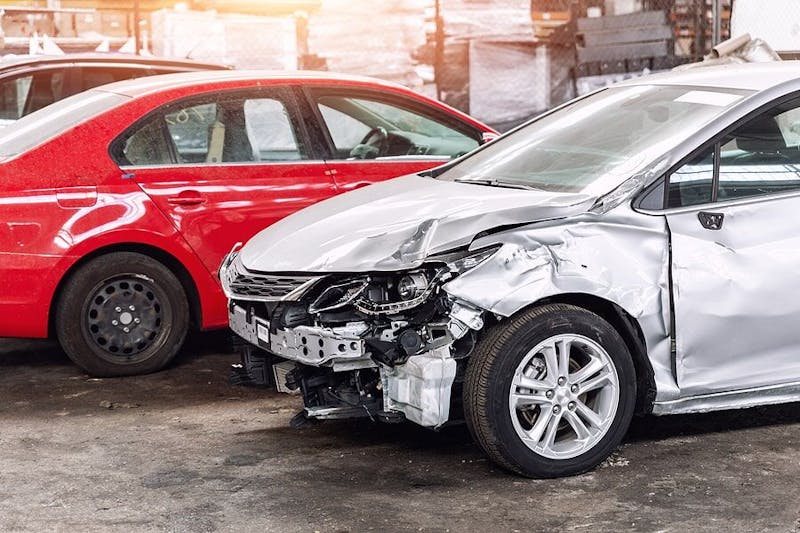Get a Free Consultation
2 minute response
24 hours a day, 7 Days a Week
Dedicated Trust Guss Intake Team

Houston, a sprawling metropolis known for its diverse culture, economic opportunities, and vibrant city life, also happens to be recognized for less favorable reasons. As one of the most populous cities in Texas and the United States, Houston witnesses high volumes of traffic, leading to a significant number of accidents each year.
This discussion spans the overall scope of traffic accidents, touches on accident-prone hotspots, and delves into specific categories, including fatal and alcohol-related accidents. With this information at your disposal, we aim to promote driving safety awareness, initiate a conversation on Houston's traffic safety protocols, and underline the life-saving importance of responsible road behavior. As we navigate these issues, our shared vision remains steadfast — to aid car accident victims in their recoveries and promote a safer Houston for everyone.
According to data, Texas—Houston is one of its busiest cities—continues to grapple with a substantial number of motor vehicle accidents each year. These accidents span a variety of categories, including motorcycle collisions, truck accidents, pedestrian incidents, and other motor vehicle accidents.
In the most recent reporting year, Texas saw 4,481 vehicle deaths over 289,965 miles traveled. In addition, the fatality rate per 100 million vehicle miles traveled has increased by almost 19%. Just over one-third of the fatal deaths—34.75 percent—were single-vehicle crashes where people ran off the road.
In total, the state of Texas saw one person killed every 2 hours and 15 minutes, and one person sustained injuries in accidents on Texas roads every 2 minutes and 34 seconds.
These figures are not just numbers; they represent real people who have experienced fear, pain, and disruption due to these unfortunate incidents. Moreover, each accident, regardless of its nature, raises a red flag about a range of issues, from road safety protocols and infrastructure to the dangers of driver negligence.
Fata traffic accidents remain a significant issue that continually calls for attention in Houston. Each instance of fatal accidents tallied in statistics speaks volumes about the stark reality of road safety and the tragic aftermath of these incidents.
In Houston, there were reportedly 308 deadly accidents in just one recent year. In the same year, among Texas’ five largest cities, Houston recorded the most traffic deaths at 328 fatalities, accentuating this alarming crash trend. For a single city contributing significantly to the statewide figures, Houston’s road safety condition is evidently concerning.
The last few years have seen a steady increase in traffic-related fatalities and severe injuries—an average escalation of 18% each year. During this period, traffic deaths ballooned by 61% and serious injuries by 34%. Regrettably, both pedestrian and driver/occupant deaths have seen similar upsurges since 2018, with a rise of 66% and 67%, respectively.
An examination of fatalities and severe injuries by demographics reveals that these tragic occurrences disproportionately affect Houston's Black community. While Black people represent 22% of Houston residents, they account for 33% of traffic deaths and 38% of serious injuries. The disproportionality has sadly increased over the years.
Pedestrians have been disproportionately impacted, representing 32% of fatalities in 2021, despite accounting for less than 2% of the population commuting to work by walking. Interestingly, although drivers constitute 86% of commute patterns, they account for only 54% of traffic deaths, a stark contrast that underscores the vulnerability and plight of pedestrians.
These statistics illuminate the harsh reality of road safety in Houston. Behind each percentage and number lies incalculable human suffering, which amplifies the urgency of improving traffic safety measures across the city.
The freedom and exhilaration of riding a motorcycle, unfortunately, come at a high risk. As road users who are less protected than those in enclosed vehicles, motorcyclists often bear the brunt of accidents with severe consequences.
In a recent year, Texas mourned the loss of 517 motorcyclists, marking a grim statistic that averages to approximately 1.3 motorcyclists losing their lives every day on Texas roads. A closer inspection of these figures reveals an even somber reality for Houston, a city that reported 34 fatal motorcycle accidents and 149 injuries stemming from such incidents in the same year.
Motorcycle accidents often lead to serious injury or death due not only to the lack of physical protection but also to frequent speed and sudden impact. The vulnerability of motorcyclists is further heightened when other drivers fail to notice motorcycles, given their smaller size compared to other vehicles.
These distressing figures emphasize the urgency to address motorcycle safety as an intrinsic part of enhancing overall road safety. While individual motorcyclists can follow best practices for safe riding, a collective focus on education, respect, and awareness amongst all road users is critical.
This data is a stark reminder of the fundamental premise of road safety: Every life matters. This principle should guide all road users, law enforcement agencies, and legislators in fostering a safer environment for motorcycle riders in Houston and across Texas.
Over the last five years, pedestrian traffic accidents have alarmingly increased by 29.6% in Texas, now accounting for one-fifth of all roadway deaths. In 2022, in our state alone, there were 5,764 crashes involving pedestrians, which tragically resulted in 829 deaths and 1,526 serious injuries.
Understanding the underlying factors contributing to these incidents is crucial in devising effective preventive measures to curb this mounting crisis. The following are the most common contributing factors for traffic crashes involving pedestrians:
While these factors reflect an interplay of different aspects, they underline an overarching theme. For drivers, reducing distractions, respecting speed limits, and yielding right-of-way appropriately can significantly reduce these unsettling statistics.
Factoring in the size, weight, and potential cargo of commercial trucks, collisions involving these vehicles are often particularly disastrous, frequently resulting in severe injuries or fatalities. In Texas alone, truck accidents led to 806 deaths in a recent year.
Throughout the United States, large truck-involved crashes resulted in 5,788 fatalities in one recent year —a harrowing 17% increase from the 4,945 deaths reported in the previous one. In these accidents, a staggering 72% of those killed were occupants of other vehicles, highlighting the immense risk large trucks pose to other road users.
Further punctuating the severity of truck accidents, 78% of the fatal incidents involving large trucks occur on weekdays—between 6 a.m. Monday and 5:59 p.m. Friday—during times of heavy traffic flow due to daily commutes and commercial operations.
What might draw a silver lining on this dark cloud of statistics is that only 3% of truck drivers involved in these fatal crashes had a blood alcohol concentration level (BAC) of .08 grams per deciliter or higher. This figure is far lower than the corresponding rates for drivers of motorcycles (28%), passenger cars (24%), and light trucks (20%).
Nonetheless, one unsettling trend emerged among truck drivers involved in these fatal crashes: 20.8% of them had previously recorded crashes, a figure that exceeded that of motorcycle drivers (19.9%), passenger car drivers (18.2%), and light truck drivers (17.2%). On a somewhat positive note, drivers of large trucks were less likely (6.5%) to have had previous license suspensions or revocations compared to other vehicle types.
Truck accidents in Texas have only increased, and it's imperative to raise the bar on truck safety. Immediate actions like robust driver training, enforcing strict adherence to driving hours, regular vehicle inspections, and upgrading road infrastructure for safe truck travel are essential to combat the steep rise in deadly truck collisions.
Traffic accidents seldom occur in isolation and most often stem from a compilation of factors. Among the prime causes of serious injuries and fatal crashes in a recent year in Houston were speeding, impairment due to alcohol or drugs, distracted driving, failure to yield right-of-way, disregarding traffic signs and signals, and unsafe driving maneuvers.
Drunk driving remains a significant road safety issue. In Texas, a recent year saw a worrying 2% increase in drunk driving-related fatalities. In absolute numbers, 1,162 people lost their lives in these tragic incidents, which roughly translates to one person dying approximately every 7 hours and 32 minutes due to an alcohol-related crash.
A deeper look into the figures reveals that 26% of all traffic fatalities in Texas involved a driver under the influence of alcohol. Combating drunk driving becomes a crucial part of any traffic safety strategy.
Speeding accounted for a staggering 32.5% of serious injuries and 33.5% of fatal crashes. Speeding reduces the driver's ability to steer safely around curves or objects in the roadway, extends the distance necessary to stop a vehicle, and increases the distance a vehicle travels while the driver reacts to a dangerous situation.
Meanwhile, distracted driving was a factor in 9.5% of serious injury cases and 2.5% of fatal crashes. Disregarding traffic signs and signals contributed to 19.0% of serious injuries and 15.5% of fatal accidents. A further 13.7% of serious injuries and 6.0% of fatal crashes were due to failure to yield the right-of-way. Lastly, unsafe driving maneuvers were responsible for 27.7% of serious injuries and 39.9% percent of fatal accidents.

Every statistic spun from an accident carries an underlying tale of pain, suffering, and loss—an individual, a family, or a community irremediably changed. This understanding should drive us forward in our collective efforts to make Texas roads safer.
Regardless of how we commute—whether we drive a car, ride a motorcycle, walk as a pedestrian, or pedal a bicycle—everyone has a role to play in enhancing road safety.
If you were involved in a motor vehicle accident, contact a car accident lawyer as soon as possible for your free case evaluation and preserve your right to recover the most compensation possible under the law.
2 minute response
24 hours a day, 7 Days a Week
Dedicated Trust Guss Intake Team